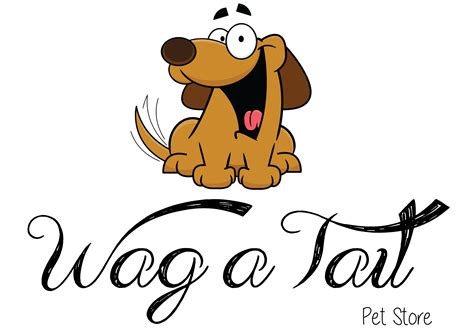The Ultimate Tail-Wagging Guide to Canine Communication
Are you ready to decipher the secret language of dogs? Tail wags are an expressive form of canine communication that can reveal a wealth of emotions and intentions. From excited greeting to anxious appeasement, every wag has a story to tell.
Understanding the Anatomy of a Wag
Before diving into the wagging world, let's get to know the anatomy of a tail wag.
-
Root: The base of the tail, where it connects to the body.
-
Midpoint: The middle section of the tail.
-
Tip: The end of the tail.
The Language of Tail Wags


Now, let's explore the diverse meanings behind tail wags:
1. High and Fast:
-
Meaning: Excitement, greeting, playfulness
-
Associated Emotions: Happiness, joy, anticipation
2. Relaxed and Low:
-
Meaning: Relaxed, comfortable, insecure
-
Associated Emotions: Contentment, submission, fear
3. Slow and Continuous:


-
Meaning: Interest, curiosity, observation
-
Associated Emotions: Attentiveness, alertness
4. Gentle Side-to-Side:
-
Meaning: Appeasement, submission
-
Associated Emotions: Anxiety, nervousness
5. Stiff and Upright:
-
Meaning: Dominance, aggression
-
Associated Emotions: Anger, fear, intimidation
6. Tucked Between Legs:

-
Meaning: Fear, submission, anxiety
-
Associated Emotions: Distress, discomfort
Interpreting Wags in Context
While tail wagging is an essential nonverbal cue, it's crucial to consider the dog's overall body language for a comprehensive interpretation.
-
Ears: Pricked up ears often indicate alertness and attention, while flattened ears can signal submission or fear.
-
Stance: A relaxed, open stance suggests comfort, while a stiff, rigid posture may indicate tension.
-
Eyes: Soft, relaxed eyes often convey calmness, while dilated pupils and intense stares can indicate excitement or aggression.
Common Mistakes to Avoid

Beware of these common pitfalls when interpreting tail wags:
-
Assuming all wags are positive: Not all wags signal happiness. Slow, side-to-side wags can indicate anxiety or appeasement.
-
Confusing fast wags with high wags: Fast and excited wags typically occur near the midpoint of the tail, while slow and curious wags happen near the root.
-
Ignoring the overall body language: Tail wags should always be interpreted in conjunction with other body cues to avoid misinterpretations.
How to Step-by-Step Approach to Deciphering Tail Wags
- Observe the dog's overall body language.
- Pay attention to the height of the wag.
- Consider the speed and frequency of the wag.
- Look for the direction of the wag.
- Assess the dog's ears, stance, and eyes.
Tips and Tricks
-
Slow down and observe: Don't rush to judgment. Spend time watching the dog's tail movements and overall behavior.
-
Get closer (if safe): Moving closer to the dog can provide a clearer view of the tail's movements and body language.
-
Use treats: Rewarding the dog for calm and friendly tail wags can encourage positive communication.
Conclusion
Tail wags are an intricate component of canine communication. By understanding the language of wags, you can better connect with your furry companion and build a stronger bond. Remember to practice patience, observe holistically, and avoid common misinterpretations. Happy wagging!
Table 1: Tail Wagging Intensity and Emotion
| Wag Intensity |
Associated Emotion |
| High and Fast |
Excitement, Greeting |
| Medium |
Curiosity, Interest |
| Slow and Continuous |
Relaxation, Comfort |
| Gentle Side-to-Side |
Appeasement, Submission |
| Stiff and Upright |
Dominance, Aggression |
Table 2: Tail Wagging Height and Emotion
| Wag Height |
Associated Emotion |
| High |
Excitement, Playfulness |
| Mid-Level |
Interest, Observation |
| Low |
Relaxation, Insecurity |
| Tucked Between Legs |
Fear, Submission |
Table 3: Body Language Clues to Enhance Tail Wag Interpretation
| Body Language Clue |
Interpretation |
| Pricked-up Ears |
Alertness, Attention |
| Flattened Ears |
Submission, Fear |
| Relaxed Stance |
Comfort, Openness |
| Stiff Stance |
Tension, Defense |
| Soft Eyes |
Calmness, Relaxation |
| Dilated Pupils |
Excitement, Aggression |
